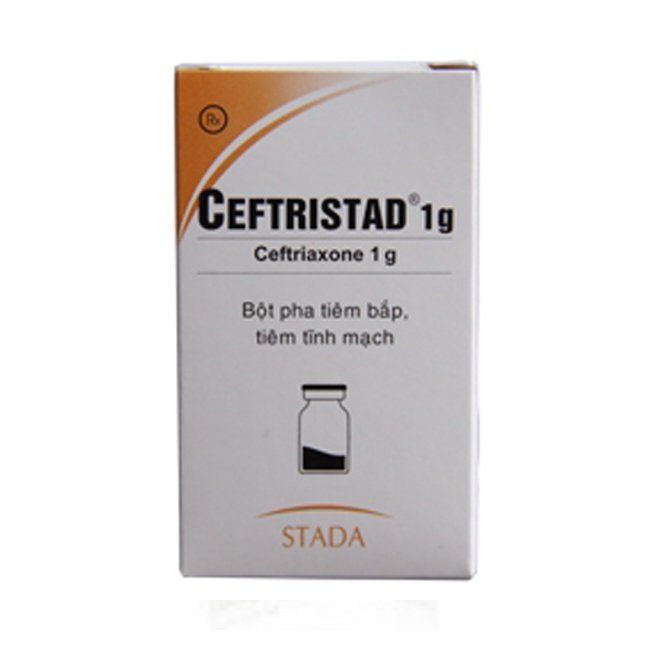Uses of Ampiside
What effect does Ampisid medicine have, does it kill bacteria strains? In fact, Ampisid is an antibiotic, used in the treatment of upper and lower respiratory tract infections, infections in the genital or urinary tract, bacteremia,...
1. What are the effects of Ampiside?
Ampisid belongs to the group of drugs for the treatment of diseases caused by parasites, infections, viruses and fungi, with the main ingredient being Sultamicillin (in the form of Sultamicillin tosilate dihydrate) 750mg. Sultamicillin is effective against sultamicillin-susceptible strains of bacteria by inhibiting cell wall mucopeptide biosynthesis. Sultamicillin has a broad spectrum of antibacterial activity, including both Gram-positive and Gram-negative bacteria.
Ampiside is prepared in the form of film-coated tablets and is indicated for use in the following cases:
Treatment of infections of the upper and lower respiratory tract (otitis media, sinusitis, tonsillitis, bronchitis, inflammation). lung). Treatment of urinary tract infections - genitourinary (pyelonephritis, gonorrhea). Treatment of bacteremia, meningitis. Treatment of infections of bones, joints, skin and subcutaneous soft tissue structures.
2. Usage and dosage of Ampiside
Ampisid medicine is used orally, take the tablet whole with water, do not break or chew the medicine to drink.
Specific dosage of Ampisid is as follows:
Children weighing over 30kg and adults: 1 tablet/time, 2 times/day. Children weighing less than 30kg: 25-50mg/kg body weight/day, divided the total dose to take 2 times/day. Duration of treatment is 5-14 days. Treatment of uncomplicated gonococcal infections: 750mg/day (corresponding to 3 tablets), a single dose. Overdosage of Ampiside due to long-term or high-dose drug use can cause secondary bacterial infections such as penicillin-resistant Staphylococcus aureus, Candida albicans or gram-negative bacilli.
3. Side effects of the drug Ampiside
Ampiside drugs can cause some unwanted side effects on the organs as follows:
Digestive system: Nausea, vomiting, epigastric pain and spasms, abdominal pain, diarrhea, fecal matter liquid. Blood system: Thrombocytopenia, anemia, eosinophilia, increased serum aminotransferase and/or bilirubin. Urinary system: Ampiside can cause interstitial nephritis as a side effect. Central nervous system: Fatigue, headache, somnolence, dyspnea. Anaphylactic skin reactions: Urticaria, burning rash, papules, pruritus, exfoliative dermatitis, allergies. If you see any strange symptoms after taking Ampiside, the patient should immediately report it to a doctor or go to a medical facility for examination.
4. Some notes when taking Ampiside
Do not use Ampiside in people who are allergic to its ingredients or have a history of allergy to penicillin. If there is an anaphylactic reaction due to an allergy to penicillin, the patient should be given adrenaline immediately and intravenous corticosteroids. Ensure airway and endotracheal intubation conditions in case of need. If there is evidence of resistance to Ampiside due to superinfection, the drug should be discontinued and appropriate treatment instituted. Patients with diarrhea following ampiside administration should consider Clostridium difficile pseudomembranous enterocolitis. If taking Ampiside for a long time, the patient should periodically check liver, kidney and hematopoietic function, especially when there is a diffuse skin rash. After being infected with a virus, do not take medicine. Pregnant women should only take Ampiside when it is absolutely necessary. However, women who are breastfeeding can be given the drug. Patients with advanced renal failure with creatinine clearance less than 30 ml/min should have their dose adjusted for Ampiside. In the elderly, although renal function may be impaired and the elimination half-life of the drug may be increased, no dose adjustment is required. Taking Ampiside with ampicillin and sulbactam may increase the concentration and prolong the duration of action of the drug; with allopurinol in patients with hyperuricemia may increase the incidence of skin rashes. The use of Ampisid is to kill bacteria that cause infections of the respiratory tract, urinary tract - genitals and also in the blood, meninges, bones, joints, on the skin or subcutaneous tissues.
Bài viết này được viết cho người đọc tại Sài Gòn, Hà Nội, Hồ Chí Minh, Phú Quốc, Nha Trang, Hạ Long, Hải Phòng, Đà Nẵng.






